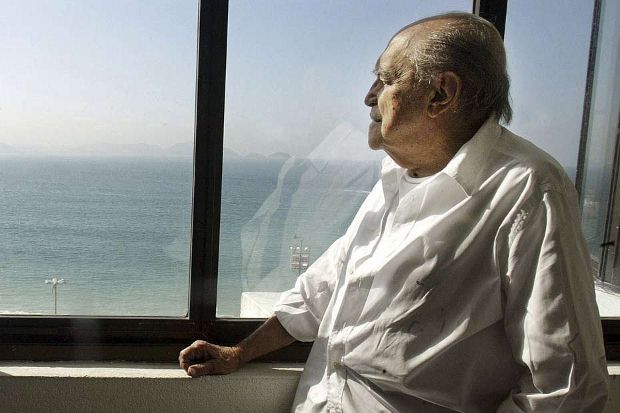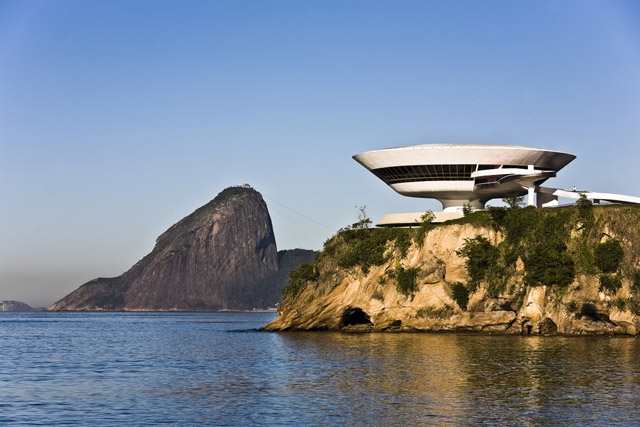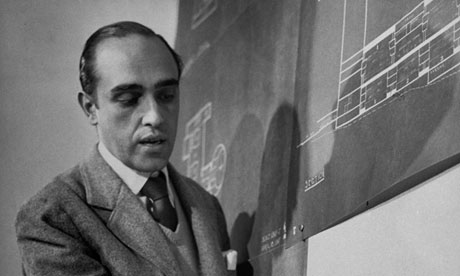
Oscar Niemeyer, Brazil's Picasso of Concrete
Latin America's greatest architect died of respiratory failure in Rio yesterday, ten days short of his 105 birthday
Among the plaudits the 104-year-old Brazilian architect, Oscar Niemeyer, won throughout his long and illustrious career, there is one that's unlikely to be bettered by any of his contemporaries - in fact, anyone anytime soon. This was given to Brasilia, the new capital Neimeyer helped design during the late 1950s. In 1987, the entire city was given World Heritage Status by UNESCO, a categorisation more usually reserved for priceless ancient buildings. Thanks in part to Niemeyer's bold, curvaceous designs, Brasilia remains the only modern city to enjoy such a status.
Nieymeyer acknowledged his own style in his Phaidon memoir, The Curves of Time. "I am not attracted to straight angles or to the straight line, hard and inflexible, created by man. I am attracted to free-flowing, sensual curves. The curves that I find in the mountains of my country, in the sinuousness of its rivers, in the waves of the ocean, and on the body of the beloved woman. Curves make up the entire universe, the curved universe of Einstein."
Breaking away from the right-angled boxes of Modernist architecture, Niemeyer established his bold new vision, thanks in part to the extraordinary properties of reinforced concrete, which enabled his swooping, gravity-defying constructions to be brought to life - a material partnership that lead the Brazilian press and public to dub him the “poet of concrete” or the “Picasso of concrete”.

While he received his Pritzker Prize in 1988 in part for Brasilia's cathedral, it also acknowledged his well-known overseas projects; during 1949 – 52 he collaborated with Le Corbusier to design the United Nations headquarters in New York and, following the Brazilian military coup of 1963, he relocated to Paris, overseeing, among other buildings, The Communist Party headquarters in Paris (1972).
He returned to Rio in 1985, where he continued to work right up until his death. Among his late, great works was The Niterói Contemporary Art Museum, Rio de Janeiro, completed in 1996, which is commonly compared to an upturned flying saucer.
While his very recent works – such as a range of footwear for Converse – might not number among his greatest works, his influence continues in buildings by the likes of Zaha Hadid and Tadao Ando, who, free from the tyranny of bricks and right angles, must give thanks to Niemeyer.

Niemeyer had been battling kidney and stomach ailments in a Rio de Janeiro hospital since early November. His death was the result of a lung infection developed this week, the hospital said.
President Dilma Rousseff, whose office sits among the landmark buildings Niemeyer designed for the modernist capital city of Brasilia, paid tribute by calling him "a revolutionary, the mentor of a new architecture, beautiful, logical, and, as he himself defined it, inventive." His body will lie in state at the presidential palace.
For more on his life and work, consider our Oscar Nieymeyer books, as well as our 20th Century World Archictecture volume, which offers a peerless overview of the finest built architecture from around the world completed between 1900 and 1999. And for the absolute perfect read on Christmas day afternoon we highly recommend Brazil's Modern Architecture, one of our current faves here at phaidon.com.
